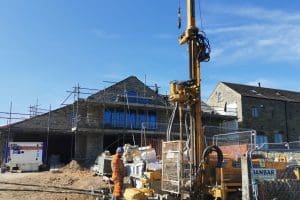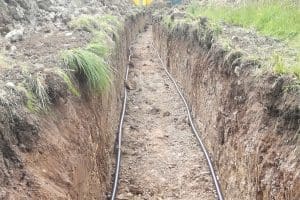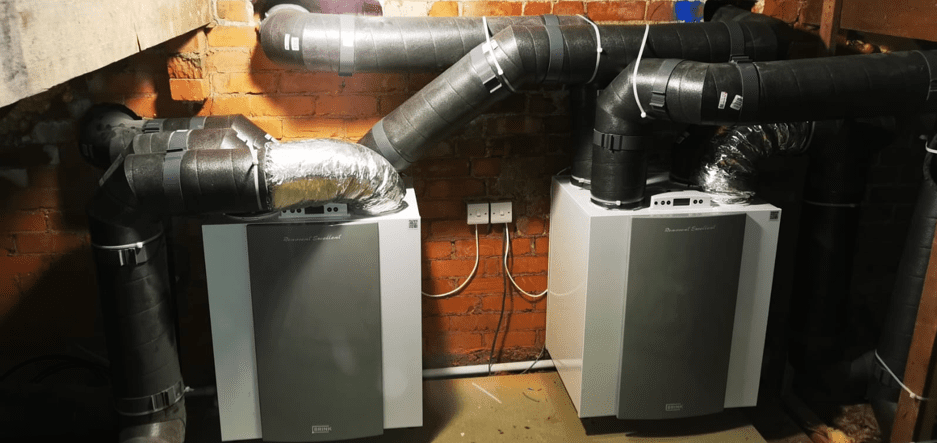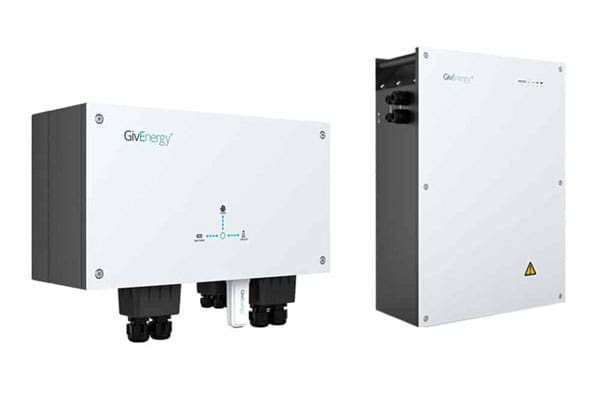Like air source, aground source heat pumps are most suitable for well insulated homes and are more efficient when delivering low flow temperatures to under floor, radiator or fan-coil heating systems. Through the introduction of new refrigerants, many ground source heat pumps are now capable of delivering temperatures comparable to those from fossil fuel boilers making them suitable for retro-installing to older properties.
There are a variety of ways the source energy in the ground, which is derived from the sun heating up the earths surface (not the heat from the earth’s core) can be collected.
Horizontal Collector
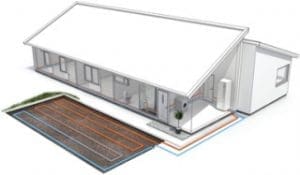
The collector loops are laid at a depth of 1 metre below the ground, where the temperature is stable throughout the year.
They are filled with a brine mixture of water and antifreeze which extracts heat from the surrounding ground as it is pumped around the system.
Fervo recommends single horizontal pipes rather than “slinky” collector loops to ensure that no more heat is taken from an area of ground than the sun can replace during the year. This avoids the problem of the ground freezing, which results in your heat pump not working.
Borehole Collector
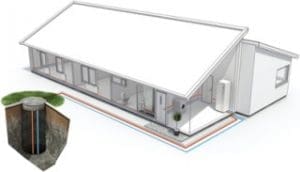
Where there is insufficient land available for a horizontal collector, vertical boreholes can be drilled down to depths of up to 200 metres.
These contain a closed collector loop containing the brine mixture. Multiple boreholes can be drilled for larger properties.
and the number and depth of boreholes will depend on the geology of the site. Harder rocks, such as granite, have a higher thermal conductivity than softer rocks, and therefore a higher efficiency.
Lake Collectors
If there is a suitable body of water such as a lake, river or even the sea close enough to the property, this is the most economical means of collecting heat. Collector loops are simply placed on the bottom of the lake or alternatively heat exchangers can be used in free-flowing water.
Water Source or “Open Loop”

This is an option if there is an underground aquifer beneath the property or a body of moving water. Instead of a closed system containing brine, the groundwater is pumped to the surface and through a heat exchanger, before being returned to the ground.
A hydrological report will determine if the ground is suitable – we can arrange this for you. The extraction of groundwater is usually subject to a permit, depending on the flow rate.
Through the Boiler Upgrade Scheme, homeowners replacing a fossil fuel or electric heating system, self-builders and property renovators can access £7,500 towards the cost of installing a ground source heat pump.
Ground source heat pumps also make sense for residential property developers as there is no need to pay for a gas connection to the site and increased marketability to potential purchasers who are looking at future running costs of the home and its green credentials. For larger developments comprising multiple dwellings, ground source heat pumps offer solutions to reduce carbon footprints through shared ground-loops and district heating systems.
